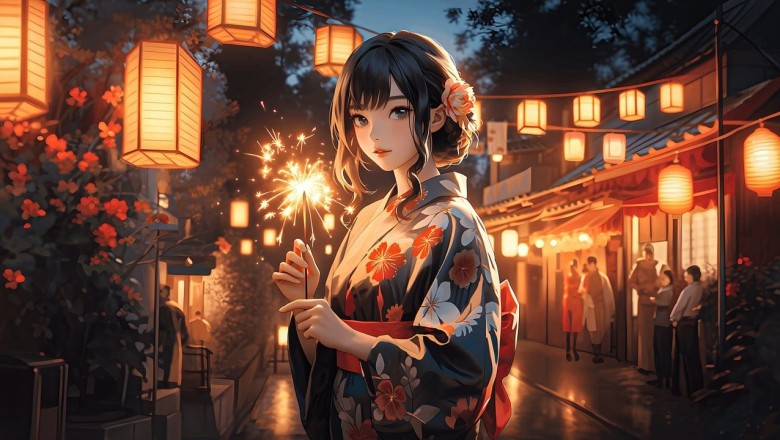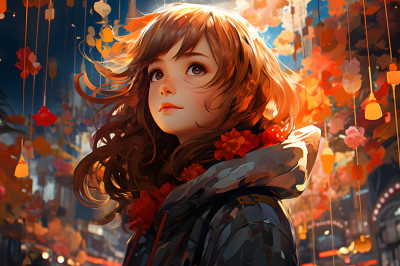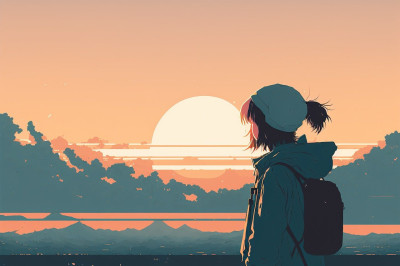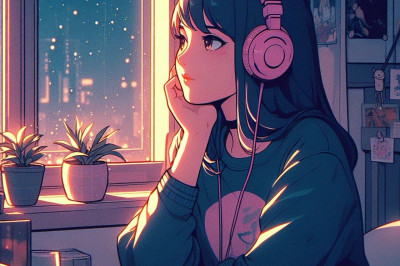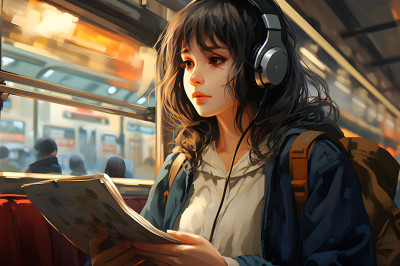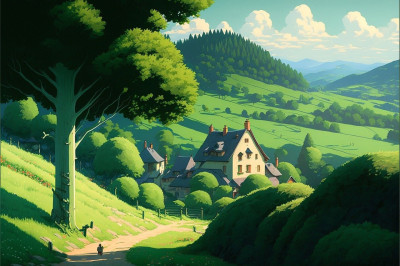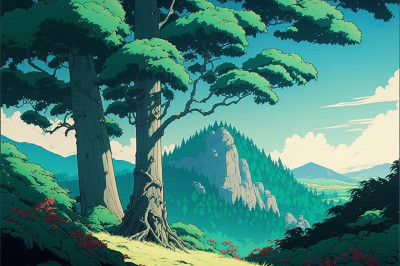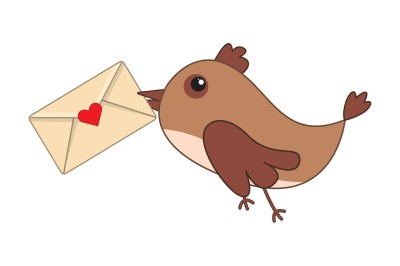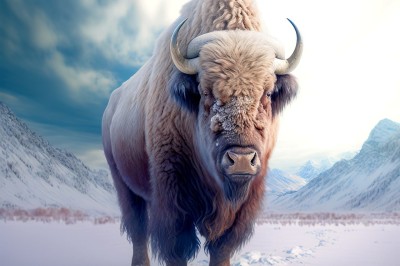Understanding the BasicsWhat is Anime?
Anime is a style of animation that originated in Japan and has become popular worldwide. It encompasses a wide range of genres and targets various demographics. Unlike the common perception of cartoons in the West, which are often considered primarily for children, anime can be aimed at children, teens, and adults, with complex themes, diverse art styles, and cultural nuances.
The History of Anime
The history of anime dates back to the early 20th century, with the earliest known Japanese animation dating from It has evolved significantly since then, with landmark series in the 1960s like "Astro Boy" by Osamu Tezuka helping to define the medium's characteristics. The 1980s and 1990s saw a boom in anime's popularity, both within Japan and internationally, with titles like "Akira" and "Dragon Ball" becoming cultural phenomena.
Anime vs. Manga
Anime is often confused with manga, which are Japanese comic books or graphic novels. While they share similar art styles and storytelling techniques, anime refers to the animated TV shows or films. Many anime are adaptations of manga, but not all manga are turned into anime. Conversely, some anime are original works or may be adapted into manga after their creation.
Genres and Demographics
Anime is categorized into numerous genres, just like any other form of entertainment, ranging from action and adventure to romance, horror, and science fiction. These genres often overlap with targeted demographic groups:
- Shonen: Typically aimed at young boys, shonen anime often features action-packed sequences, camaraderie, and coming-of-age themes.
- Shojo: Targeted at young girls, shojo anime focuses on romance, relationships, and personal growth.
- Seinen: Intended for adult men, seinen anime can include more sophisticated or mature themes, often with complex plots and character development.
- Josei: Aimed at adult women, josei anime portrays realistic romantic relationships, slice-of-life narratives, and sometimes mature themes.
Anime production is a collaborative process involving the efforts of directors, writers, animators, voice actors, and other professionals. It begins with the creation of a concept, which is then turned into a script and storyboard. Character designs, backgrounds, and animations are created and combined with voice acting, music, and sound effects to produce the final product.
The Cultural Impact of Anime
Anime has had a significant cultural impact, both in Japan and across the globe. It has influenced popular culture, fashion, and art, and has contributed to the global understanding of Japanese culture. Anime conventions, merchandise, and the rise of streaming services have made anime more accessible than ever, creating a thriving international fan community.
The Language of Anime
Anime often includes unique terminology that fans should become familiar with. Terms like "otaku" (a dedicated fan of anime and manga), "kawaii" (cute), and "tsundere" (a character who is initially cold but gradually shows a warmer side) are just a few examples of the specialized language used within the anime community.
Watching Anime: Subs vs. Dubs
When watching anime, viewers can choose between subtitled versions (subs), which retain the original Japanese audio with translated text at the bottom of the screen, or dubbed versions (dubs), where the original audio is replaced with voice acting in another language. Fans often debate the merits of each, with some preferring the authenticity of subs and others the accessibility of dubs.
Shonen: Anime for Young BoysDefining Shonen Anime
Shonen anime, derived from the Japanese word "shōnen" meaning "boy" or "youth," is a genre of anime and manga specifically targeted towards young male audiences, typically between the ages of 12 and This genre is characterized by high-energy stories with themes of friendship, action, adventure, and personal growth. The protagonists in shonen anime are often young males who face challenges, improve their abilities, and grow stronger both physically and emotionally throughout the series.
Common Themes and Tropes
Shonen anime is known for its common themes such as the value of hard work, perseverance, and the importance of camaraderie. The protagonists often have a strong sense of justice and are driven by goals that require them to overcome various obstacles. Tropes such as the underdog becoming powerful, the presence of a mentor figure, and the formation of friendships or rivalries that push the characters to new heights are prevalent in this genre.
The Power of Friendship
One of the most enduring themes in shonen anime is the emphasis on friendship. Characters often work together, forming bonds that become their source of strength in overcoming adversaries. The "nakama" concept, which translates to "comrades" or "friends," is a central element, showcasing how teamwork and loyalty play crucial roles in the characters' journeys.
Training and Power-Ups
Shonen anime frequently features extensive training sequences and power-ups, where characters undergo rigorous exercises or discover new abilities that allow them to face stronger opponents. These moments are often pivotal, leading to exciting battles and showcasing the characters' development.
Popular Shonen Anime Examples
Some of the most iconic and influential shonen anime include "Dragon Ball," "Naruto," "One Piece," and "Bleach." These series have gained massive international followings and have set the standard for what audiences expect from the genre. They feature epic battles, diverse character ensembles, and long-running story arcs that have captivated viewers for years.
"Dragon Ball" Series
"Dragon Ball" and its sequels, such as "Dragon Ball Z," follow the adventures of Goku and his friends as they protect the Earth from various threats. The series is renowned for its intense fight scenes and the concept of "Ki" or energy, which characters harness to perform powerful moves.
"Naruto" and "Naruto Shippuden"
"Naruto" tells the story of Naruto Uzumaki, a young ninja with dreams of becoming the strongest leader in his village. The series is celebrated for its intricate world-building, well-developed characters, and exploration of themes like acceptance and the consequences of war.
"One Piece"
"One Piece" chronicles the journey of Monkey D. Luffy and his pirate crew as they search for the ultimate treasure. The series is praised for its imaginative setting, humor, and the strong bonds between the crew members.
"Bleach"
"Bleach" follows Ichigo Kurosaki, a teenager who gains the powers of a Soul Reaper and battles evil spirits known as Hollows. The anime is known for its stylish action sequences and the complex spiritual world it creates.
Impact on Pop Culture
Shonen anime has had a significant impact on pop culture, not only in Japan but around the world. The genre's influence can be seen in various forms of media, including video games, novels, and even Western animation. The universal themes and engaging storytelling of shonen anime have allowed it to transcend cultural barriers, creating a global fanbase and inspiring a new generation of creators.
Shojo: Anime for Young GirlsDefining Shojo Anime
Shojo anime, often spelled "shoujo," is a genre of anime that specifically targets young female audiences, typically between the ages of 10 and The term "shojo" itself translates to "young girl" in Japanese. This genre is characterized by its focus on personal and romantic relationships, emotional connections, and often, a more dramatic or even melodramatic storytelling style. The art style in shojo anime frequently features characters with large, expressive eyes and relatively intricate, decorative designs.
Common Themes and Focus
Shojo anime often delves into themes of love, friendship, personal growth, and self-discovery. Romance is a prevalent element, with many series revolving around the protagonist's love life and emotional experiences. However, it's not just about romantic love; these stories also explore the complexities of platonic relationships and the bonds between friends and family.
Character Development and Storytelling
Character development is a cornerstone of shojo anime, with a strong emphasis on the protagonist's journey. The storytelling is usually character-driven, providing viewers with a deep understanding of the characters' thoughts, feelings, and motivations. Shojo anime often employs internal monologues and emotional reflections to convey the characters' inner worlds.
Artistic Style and Aesthetics
The artistic style of shojo anime is distinct, with an emphasis on aesthetics that appeal to its target demographic. Characters are typically drawn with large, emotive eyes, which are believed to be more expressive and appealing to the audience. Backgrounds and settings often include flowers, sparkles, and soft color palettes, contributing to the overall romantic and dreamy atmosphere.
Popular Shojo Anime Examples
To illustrate the shojo genre, several iconic series have left a lasting impact on anime culture. "Sailor Moon" is perhaps one of the most famous shojo anime, combining magical girl elements with romance and action. "Cardcaptor Sakura" is another classic, focusing on magical adventures and the protagonist's growth. "Fruits Basket" explores deeper emotional themes through its supernatural storyline and complex character relationships. "Ouran High School Host Club" takes a comedic approach to shojo tropes, parodying the genre while still delivering heartfelt moments.
Shojo Anime's Influence on Viewers
Shojo anime has a significant influence on its viewers, often shaping their perceptions of relationships, personal identity, and emotional expression. By presenting relatable characters and scenarios, shojo anime can offer young girls a space to explore their own feelings and experiences vicariously. It also provides a platform for discussing important life lessons and social issues relevant to its audience.
The Evolution of Shojo Anime
Over the years, shojo anime has evolved, with newer titles exploring more diverse themes and genres. While romance remains a staple, series like "Revolutionary Girl Utena" challenge traditional gender roles and societal expectations. "Nana" addresses the complexities of adult relationships and the pursuit of personal dreams. As the audience for shojo anime grows and diversifies, the genre continues to expand its boundaries, offering a wider range of stories that still resonate with the core themes of emotional growth and personal connections.
Seinen: Mature Anime for Adult MenUnderstanding Seinen Anime
Seinen anime is a genre that caters to adult men, typically those aged 18 and above. Unlike shonen, which often features high-energy action and coming-of-age themes, seinen anime tends to delve into more complex storylines, mature themes, and nuanced character development. The content in seinen anime is diverse, ranging from intense psychological dramas to political thrillers, and often includes more graphic content, such as violence and sexual themes, which are not suitable for younger audiences.
Common Themes and Storylines
Seinen anime often explores the darker aspects of life, including psychological struggles, moral ambiguity, and the complexities of societal issues. Themes such as existentialism, loneliness, and the human psyche are prevalent, providing a more introspective viewing experience. Storylines may revolve around the intricacies of the workplace, relationships, or personal growth, and they frequently challenge the viewer with thought-provoking questions about life and human nature.
Character Development and Realism
Characters in seinen anime are usually more developed and multifaceted compared to those in shonen. They often have complex backstories and personalities that evolve over time, reflecting the challenges and experiences of adulthood. Realism is a key component in character portrayal, with individuals facing realistic problems and moral dilemmas. This focus on character depth allows for a more relatable and emotionally resonant experience for adult viewers.
Art Style and Animation
The art style in seinen anime can vary widely, but it often leans towards more realistic and detailed depictions, especially in character designs and backgrounds. Animation quality is typically high, with careful attention to the subtleties of character expressions and movements. This attention to detail helps to convey the mature and sophisticated tone that is characteristic of the genre.
Popular Seinen Anime Examples
To illustrate the diversity within the seinen genre, here are a few examples of popular seinen anime:
- "Ghost in the Shell": A cyberpunk series that explores themes of identity, consciousness, and technology in a future where cybernetic enhancements are the norm.
- "Berserk": A dark fantasy series known for its intense storytelling and graphic content, following a lone mercenary's struggle against demonic forces.
- "Monster": A psychological thriller that follows a brain surgeon's journey across Europe as he seeks to uncover the truth about a former patient who has become a serial killer.
- "Tokyo Ghoul": A series that delves into the coexistence of humans and ghouls, creatures who survive by consuming human flesh, and the moral complexities that arise from their interactions.
Seinen anime holds a significant place in anime culture, offering a more mature and sophisticated viewing experience that resonates with adult audiences. It demonstrates the versatility of anime as a medium, capable of telling a wide range of stories that appeal to different age groups and interests. As the anime audience continues to grow and diversify, seinen anime plays a crucial role in providing content that challenges, entertains, and engages viewers on a deeper level.
Josei: Mature Anime for Adult WomenUnderstanding Josei
Josei anime is a genre that specifically targets adult women, typically ranging from the late teens into adulthood. This genre is known for its realistic portrayal of life, relationships, and personal growth. Unlike shonen, which often features high-energy action, or shojo, which can focus on romantic relationships in a more idealistic way, josei tends to present a more grounded and mature perspective on these themes.
Themes and Storytelling
Josei series often delve into the complexities of life and relationships with a sense of authenticity that resonates with its audience. The storytelling in josei anime can cover a wide range of topics, from the struggles of entering the workforce, maintaining friendships, navigating romantic relationships, to dealing with more serious life issues. The narratives are usually character-driven, providing a deep exploration of the characters' emotions, motivations, and personal journeys.
Character Development
In josei anime, character development is a central element. The characters are typically well-rounded and multifaceted, with their personal growth being a key focus of the narrative. These characters often face real-life challenges and moral dilemmas that require them to evolve and adapt. The development is gradual and nuanced, reflecting the complexities of real-world personal growth.
Art Style and Aesthetics
The art style in josei anime can vary widely, but it generally leans towards a more sophisticated and less stylized look compared to shonen or shojo. The character designs tend to be more realistic, with subtler expressions that convey the internal emotional states of the characters. Backgrounds and settings are often detailed, creating an immersive world that mirrors the complexity of the characters' lives.
Popular Josei Titles
Some popular josei titles that exemplify the genre include "Nana," which explores the bond between two young women with the same name but different life aspirations, and "Honey and Clover," which follows a group of art college students as they navigate love, friendship, and personal ambitions. "Paradise Kiss" is another notable title that delves into the world of fashion and the pursuit of dreams, while "Shouwa Genroku Rakugo Shinjuu" offers a historical perspective, focusing on the art of Japanese storytelling and its impact on the performers' lives.
The Appeal of Josei
Josei anime appeals to its audience by providing stories that adult women can relate to on a personal level. The genre's focus on realistic scenarios and emotional depth offers a form of entertainment that is both engaging and thought-provoking. It's a space where mature themes are explored with sensitivity and complexity, allowing viewers to see aspects of their own lives reflected in the characters and narratives.
Kodomo: Anime for ChildrenUnderstanding Kodomo
Kodomo, which literally means "child" in Japanese, is a genre of anime and manga created specifically for young children. These shows are often characterized by their bright colors, simple storylines, and educational content. They are designed to be easily understandable and enjoyable for kids, often featuring themes of friendship, adventure, and moral lessons.
Examples of Kodomo Anime
Popular examples of kodomo anime include "Doraemon," which follows the adventures of a robotic cat from the future, and "Anpanman," a show about a superhero with a bread for a head who helps those in need. These series are not only entertaining but also aim to instill good values and sometimes teach basic skills like reading and math.
Mecha: The World of Robots and MachinesDefining Mecha
Mecha anime is a genre that revolves around robots or mechanical suits, often piloted by humans. These series can range from action-packed to deeply philosophical, and they often explore themes of war, technology, and humanity's relationship with machines.
Subgenres within Mecha
Mecha anime can be divided into two main subgenres: Super Robot and Real Robot. Super Robot series, such as "Mazinger Z," focus on larger-than-life robots with fantastical abilities, often fighting to save the world from evil. Real Robot series, like "Mobile Suit Gundam," present more realistic machines and delve into the political and social aspects of warfare.
Impact of Mecha Anime
Mecha has been a staple in the anime industry, influencing pop culture and inspiring technological innovation. The genre has a dedicated fan base and has led to the creation of model kits, video games, and other merchandise.
Exploring Other DemographicsSeinen and Josei
Beyond shonen and josei, there are other demographic labels that help categorize anime and manga. Seinen series are targeted at adult men and often feature more mature themes, complex plots, and nuanced characters. Josei, on the other hand, is aimed at adult women and typically explores romantic or slice-of-life stories with a realistic approach.
The Diversity of Anime Genres
Anime encompasses a wide range of genres, each with its own unique appeal. From horror to science fiction, sports to fantasy, there is an anime genre to suit every taste. These genres can overlap with demographic categories, creating a rich and varied landscape of content.
Niche Genres and ThemesIsekai: Another World Adventures
Isekai is a subgenre where characters are transported to, reborn, or trapped in a parallel universe or fantasy world. This genre has gained immense popularity with series like "Sword Art Online" and "Re:Zero," captivating audiences with their imaginative worlds and the protagonists' struggles to adapt and often survive.
Slice of Life: The Beauty of the Mundane
Slice of life anime focuses on the everyday experiences of characters, often emphasizing character interactions and growth over plot development. These stories can be set in realistic settings or incorporate fantastical elements but always aim to create a sense of relatability and emotional resonance.
Sports: Competitive Spirit and Teamwork
Sports anime highlights the excitement and drama of various athletic competitions, from basketball in "Kuroko's Basketball" to volleyball in "Haikyuu!!" These series often emphasize themes of teamwork, perseverance, and personal growth, inspiring viewers with their dynamic action and heartfelt stories.
The Role of Genre in Anime
Each anime genre offers a different lens through which viewers can explore complex themes and experiences. Whether it's the thrill of competition, the struggles of daily life, or the allure of a completely new world, anime genres provide a diverse array of storytelling possibilities that continue to captivate audiences worldwide.
Genre Blending in Anime: When Categories OverlapThe Nature of Genre Blending
In the world of anime, genres are often not rigid compartments but rather fluid and overlapping categories. Genre blending occurs when an anime incorporates elements from multiple genres, creating a hybrid that can appeal to a broader audience. This fusion allows for a richer narrative by combining the strengths of each genre, such as the character development found in Josei with the action-packed scenes typical of Shonen.
Common Genre Combinations
One of the most prevalent combinations is the blend of action and romance. These anime often feature intense battle scenes alongside a developing romantic subplot, satisfying fans of both adrenaline-pumping sequences and emotional character connections. Another popular mix is the incorporation of supernatural elements into slice-of-life stories, adding a layer of fantasy to the everyday experiences of the characters.
The Role of Demographics in Blending
While genres like Shonen and Josei originally cater to specific demographics, the blending of genres often transcends these boundaries. A Shonen anime might integrate themes of romance and personal growth that are characteristic of Shojo and Josei, attracting a more diverse audience that includes viewers outside its target demographic.
Impact on Character Development
Characters in genre-blended anime benefit from a more nuanced development as they navigate a world that is not confined to a single genre's tropes. For instance, a protagonist in a series that combines science fiction and sports might exhibit the strategic thinking typical of sci-fi leads while also displaying the competitive spirit and teamwork found in sports anime.
Storytelling Flexibility
Writers and creators enjoy greater storytelling flexibility in genre-blended anime. They can shift the tone and style of the narrative by drawing from the conventions of different genres. This allows for unexpected plot twists and a dynamic storytelling pace, keeping viewers engaged and often leading to innovative story arcs.
Challenges of Genre Blending
While blending can create rich and engaging content, it also presents challenges. Striking the right balance between genres is crucial; leaning too heavily on one can alienate fans of the other. Additionally, maintaining a coherent narrative while juggling multiple genre elements requires skillful writing and direction to avoid a disjointed or confusing storyline.
Examples of Genre-Blended Anime
To illustrate the concept, several anime have successfully managed to blend genres. "Fullmetal Alchemist" combines action, adventure, fantasy, and military elements, while "Steins;Gate" merges science fiction with thriller and romance. These series exemplify how genre blending can result in compelling and widely acclaimed anime.
Tips for Newcomers: How to Choose the Right Anime Genre for YouUnderstand Your Preferences in Other Media
Before diving into anime, consider the types of stories you enjoy in other forms of entertainment such as books, movies, or TV shows. Do you prefer action-packed adventures, romantic tales, or thought-provoking dramas? Identifying your existing preferences can guide you towards corresponding anime genres.
Explore the Major Anime Genres
Shonen
Shonen anime, typically aimed at young males, often features action, adventure, and camaraderie. If you enjoy superhero movies or coming-of-age stories, start with shonen titles.
Shojo
Shojo anime targets young females and often revolves around romance and relationships. If you're drawn to romantic comedies or dramas, shojo might be your gateway into anime.
Seinen
Seinen anime is designed for adult males, with more complex themes and narratives. If you appreciate gritty storylines or psychological thrillers, seinen could be a good fit.
Josei
Josei anime caters to adult females, with realistic depictions of life and mature relationships. If you're interested in slice-of-life narratives or romantic dramas that tackle real-world issues, consider josei.
Sample Different Subgenres
Anime genres are broad, and within each, there are numerous subgenres. For example, within shonen, you can find sports anime, fantasy, sci-fi, and more. Try watching a few episodes from different subgenres to refine your tastes.
Consider the Art Style and Animation
Anime comes in various art styles, from the highly stylized to the more realistic. Some viewers might prefer the clean lines and bright colors of mainstream anime, while others might be drawn to the unique aesthetics of more artistically experimental works.
Pay Attention to Themes and Content
Think about the themes you're comfortable exploring. Some anime can include mature content, violence, or complex philosophical questions. Make sure to choose a genre that aligns with your comfort level and interests.
Read Reviews and Recommendations
Look for anime recommendations online, read reviews, and join forums or social media groups. Fans often share their favorite series and why they love them, which can help you find anime that resonates with you.
Start with Acclaimed Titles
Each genre has its standout titles that are popular for a reason. Starting with these can give you a sense of the best each genre has to offer. For example, "My Hero Academia" in shonen or "Nana" in josei.
Don't Be Afraid to Drop a Series
If an anime doesn't capture your interest after a few episodes, it's okay to stop watching. Not every series will be a perfect match for your tastes, and there's plenty more to choose from.
Give It Time
Developing an understanding of your anime preferences might take time. Be patient with yourself as you explore different genres and find what truly resonates with you.



